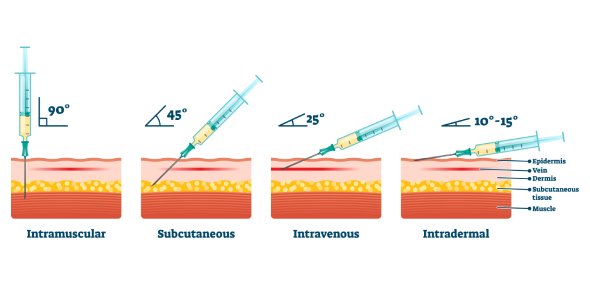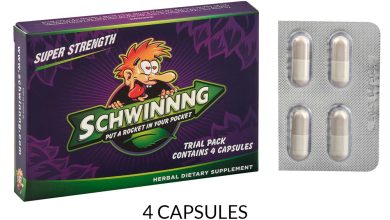Mistakenly Giving Subcutaneous Injection Intramuscularly

A subcutaneous injection is a method of administering medication. Subcutaneous means under the skin. In this type of injection, a short needle is used to inject a drug into the tissue layer between the skin and the muscle. Medication given this way is usually absorbed more slowly than if injected into a vein, sometimes over a period of 24 hours.
This type of injection is used when other methods of administration might be less effective. For example, some medications can’t be given by mouth because acid and enzymes in the stomach would destroy them.
Other methods, like intravenous injection, can be difficult and costly. For small amounts of delicate drugs, a subcutaneous injection can be a useful, safe, and convenient method of getting a medication into your body.
Medications given using a subcutaneous injection
Medications administered by subcutaneous injection include drugs that can be given in small volumes (usually less than 1 mL but up to 2 mL is safe). Insulin and some hormones are commonly administered as subcutaneous injections.
Other drugs that need to be given very quickly can also be administered via subcutaneous injection. Epinephrine comes in an automated injector form, called an EpiPen, that’s used to quickly treat severe allergic reactions. While it’s intended to be given intramuscularly, epinephrine will also work if given subcutaneously.
Some pain medications like morphine and hydromorphone (Dilaudid) can be given this way as well. Drugs that prevent nausea and vomiting like metoclopramide (Reglan) or dexamethasone (DexPak) can also be given via subcutaneous injection.
Some vaccines and allergy shots are administered as a subcutaneous injection. Many other vaccines are administered as an intramuscular injection — into muscle tissue rather than under the skin.
What Will Happen If You Mistakenly Give Subcutaneous Injection Intramuscularly?
An intramuscular injection is a technique used to deliver a medication deep into the muscles. This allows the medication to be absorbed into the bloodstream quickly. You may have received an intramuscular injection at a doctor’s office the last time you got a vaccine, like the flu shot.
In some cases, a person may also self-administer an intramuscular injection. For example, certain drugs that treat multiple sclerosis or rheumatoid arthritis may require self-injection.
Studies indicate that although serious reactions are rare when you mistakenly give subcutaneous injection intramuscularly, the medication might not work effectively as it should thus affecting efficacy of the medication and potentiate local adverse events.
The CDC instructs healthcare professionals to administer the flu vaccine into the intramuscular tissue, and if it is mistakenly injected Subcutaneously, they recommend injecting another dose IM. This would suggest the flu shot is not effective Subcutaneously, as it is designed IM.
The reason why the muscle is probably spared the harmful effects of substances injected into it is because of its abundant blood supply. Adipose tissue, having much poorer drainage channels, retains injected material for much longer and is therefore also more susceptible to its adverse effects.
How to do a subcutaneous injection
To give a subcutaneous injection, people should follow these steps:
- Choose a fatty area of the body, such as the abdomen, back of the arm, or thigh: If you are giving several injections or have to do daily injections, rotate the sites to allow each area to heal between injections
- Wash hands before cleaning the area with an alcohol pad: Wait for the area to completely dry before the next step.
- Take the cap off the needle: Draw medication into the syringe, according to the directions on the vial. This usually means turning the vial upside down then pulling the plunger back to suck in the medication. Tap the syringe to get rid of air bubbles.
- Pinch a fold of skin: Pinch the fatty area about 2-inches thick in between the thumb and a finger.
- While holding the needle like a dart, slide it into the skin at an angle of 90 degrees: Needles used for subcutaneous injection are usually short and small and should go all the way into the skin.
- Push the plunger all the way down quickly: Do not push forcefully.
- Cover the needle: Dispose of the needle in a needle-safe container.
The best location for a subcutaneous injection depends on a person’s pain sensitivity and where they have some subcutaneous fat.





